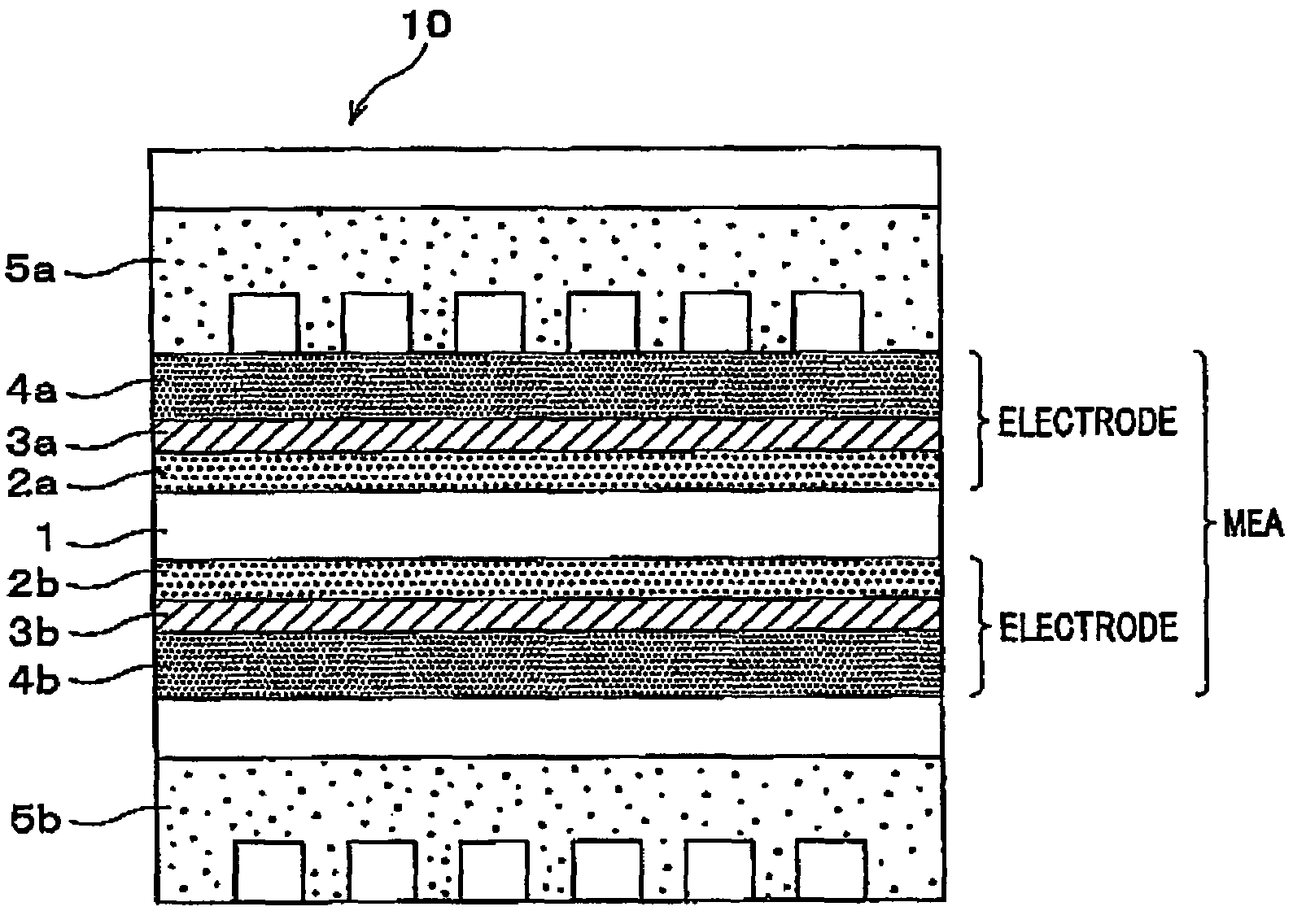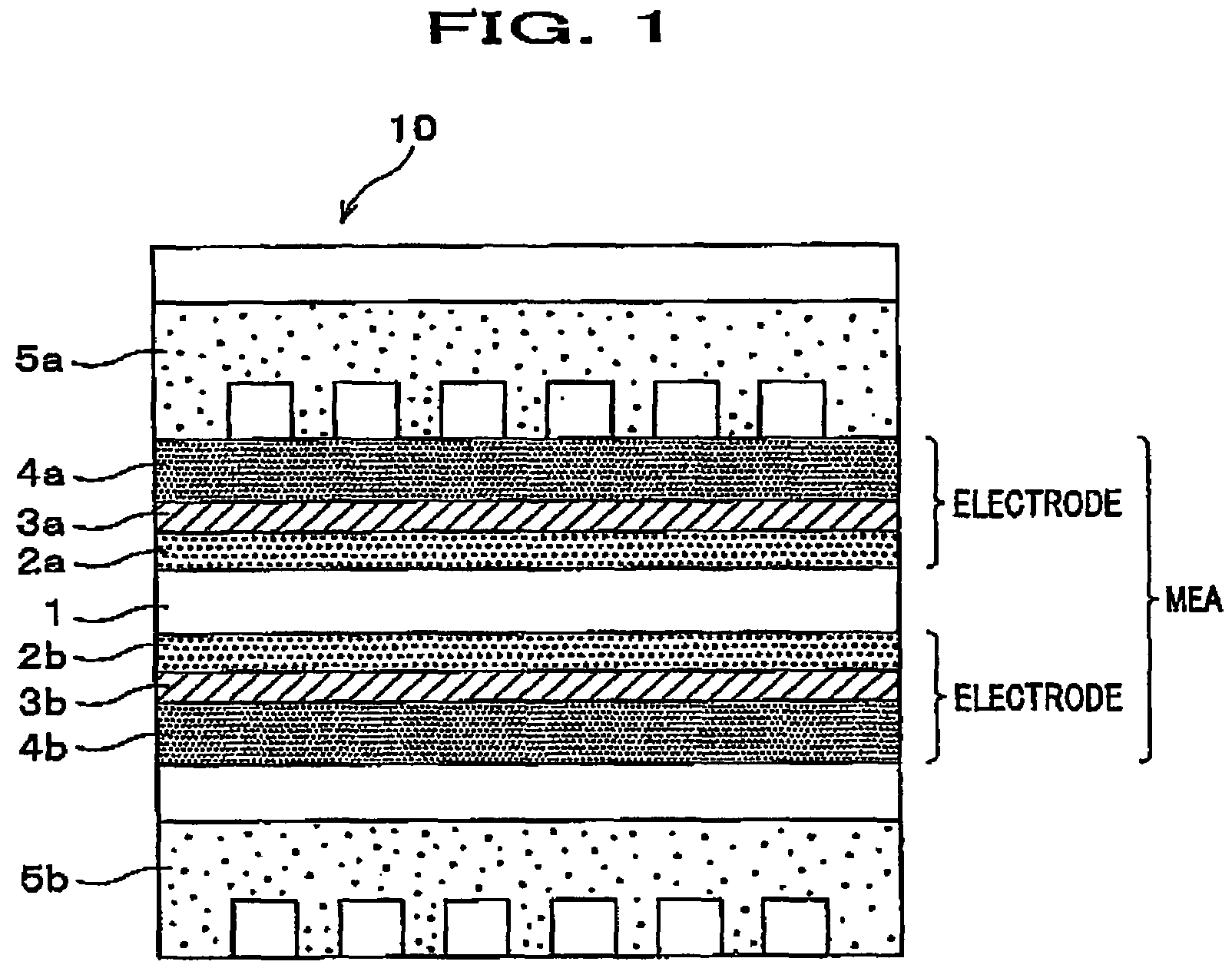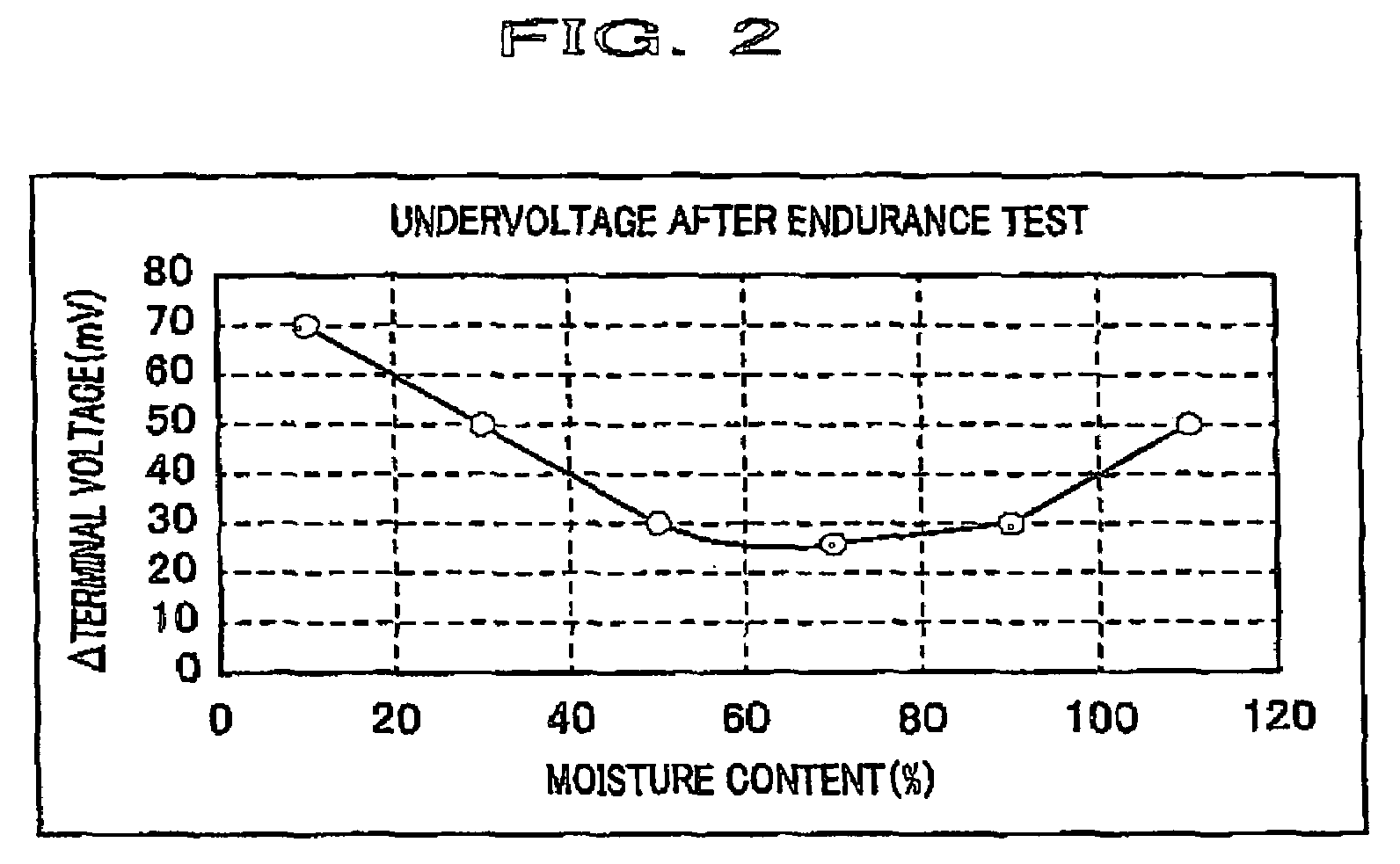Electrode for solid polymer fuel cell
a solid polymer fuel cell and electrode technology, applied in cell components, electrochemical generators, transportation and packaging, etc., can solve the problems of carbon corrosion, which would otherwise proceed, and can be inhibited, so as to improve the water-retaining capacity of the gas diffusion layer, prevent flooding, and facilitate water drainage
- Summary
- Abstract
- Description
- Claims
- Application Information
AI Technical Summary
Benefits of technology
Problems solved by technology
Method used
Image
Examples
first embodiment
General Structure: First Embodiment
[0035]First of all, an exemplified general structure of a single cell of a solid polymer fuel cell including an electrode (and membrane electrode assembly) according to the present invention will be described as a first embodiment of the present invention with reference to FIG. 1.
[0036]The single cell 10 of the solid polymer fuel cell includes, as shown in FIG. 1, a solid polymer membrane 1, and disposed at both sides of the solid polymer membrane 1 are electrode catalyst layers 2a, 2b, water-holding layers 3a, 3b, and gas diffusion layers 4a, 4b in this order. These components 4a, 3a, 2a, 1, 2b, 3b, 4b make up a membrane electrode assembly (MEA). The single cell 10 further includes separator plates 5a, 5b which are disposed at both sides of the MEA and serve to separate the MEA from MEAs of other cells adjacent to the cell 10 and to provide channels for supplying reactant gases (fuel gases and oxidant gases). In other words, there is provided a pa...
third embodiment
[0059]Next, a description will be given of a third embodiment of the electrode and membrane electrode assembly according to the present invention with reference to FIG. 3. The difference in structure of the electrode according to the third embodiment from the electrode according to the first and second embodiments is in a water-repellent layer (not shown) for facilitating drainage of water from the gas diffusion layer, which water-repellent layer is provided between the water-holding layer and the gas diffusion layer. The water-repellent layer is formed by mixing Teflon ® dispersed solution with carbon black powders. To be more specific, the electrode according to the third embodiment includes an electrode catalyst layer, a water-holding layer, a water-repellent layer, and a gas diffusion layer; among these components, the gas diffusion layer is targeted for moisture-content adjustment so that a stable power generation performance can be achieved.
[0060]A relationship between a moist...
fourth embodiment
[0066]Next, a description will be given of a fourth embodiment of the electrode and membrane electrode assembly according to the present invention with reference to FIGS. 4A through 4C. Unlike the electrodes according to the second and third embodiments of the present invention in which the moisture content of the gas diffusion layer is adjusted appropriately to stably achieve an adequate level of power generation performance, the fourth embodiment of the electrode is configured to adjust a differential pressure of reactant gases calculated from two pressures measured at places upstream and downstream of the gas diffusion layer to a specific range, i.e., between 60 mmH2O and 120 mmH2O inclusive, so that an adequate level of power generation performance can be stably achieved.
[0067]FIG. 4A is a graph showing a relationship between a differential pressure of reactant gases calculated from two pressures at places upstream and downstream of the gas diffusion layer and an undervoltage (d...
PUM
| Property | Measurement | Unit |
|---|---|---|
| porosity | aaaaa | aaaaa |
| current density | aaaaa | aaaaa |
| terminal voltage | aaaaa | aaaaa |
Abstract
Description
Claims
Application Information
 Login to View More
Login to View More - R&D
- Intellectual Property
- Life Sciences
- Materials
- Tech Scout
- Unparalleled Data Quality
- Higher Quality Content
- 60% Fewer Hallucinations
Browse by: Latest US Patents, China's latest patents, Technical Efficacy Thesaurus, Application Domain, Technology Topic, Popular Technical Reports.
© 2025 PatSnap. All rights reserved.Legal|Privacy policy|Modern Slavery Act Transparency Statement|Sitemap|About US| Contact US: help@patsnap.com



